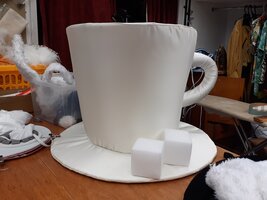Hi
I have a real world problem and I am stumped but I'm sure the answer is out there in a maths brain somewhere.
I need to make a truncated cone, measurements I know are;
base diameter
top diameter
the sloping side of the truncated cone (from which even I can calculate the height of the truncated cone if needed)
What I am trying to calculate is the sloping side if it was a full cone, rather than truncated, because then I can easily draw this out on a flat sheet with a tape measure and a pen.
If someone can come up with a simple formula that I can put the figures in to then I would be very grateful, and very impressed.
Please be gentle with me!
Ridge.
I have a real world problem and I am stumped but I'm sure the answer is out there in a maths brain somewhere.
I need to make a truncated cone, measurements I know are;
base diameter
top diameter
the sloping side of the truncated cone (from which even I can calculate the height of the truncated cone if needed)
What I am trying to calculate is the sloping side if it was a full cone, rather than truncated, because then I can easily draw this out on a flat sheet with a tape measure and a pen.
If someone can come up with a simple formula that I can put the figures in to then I would be very grateful, and very impressed.
Please be gentle with me!
Ridge.

.jpg?width=590&height=370&fit=bounds)
